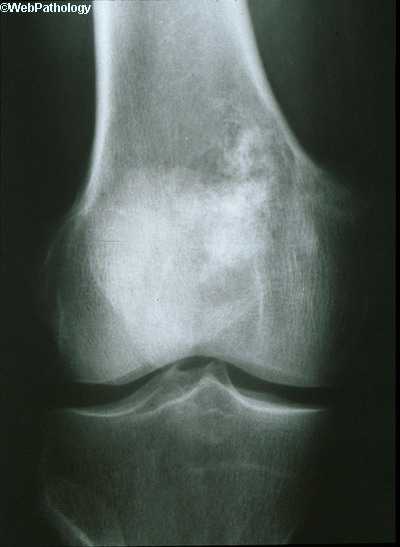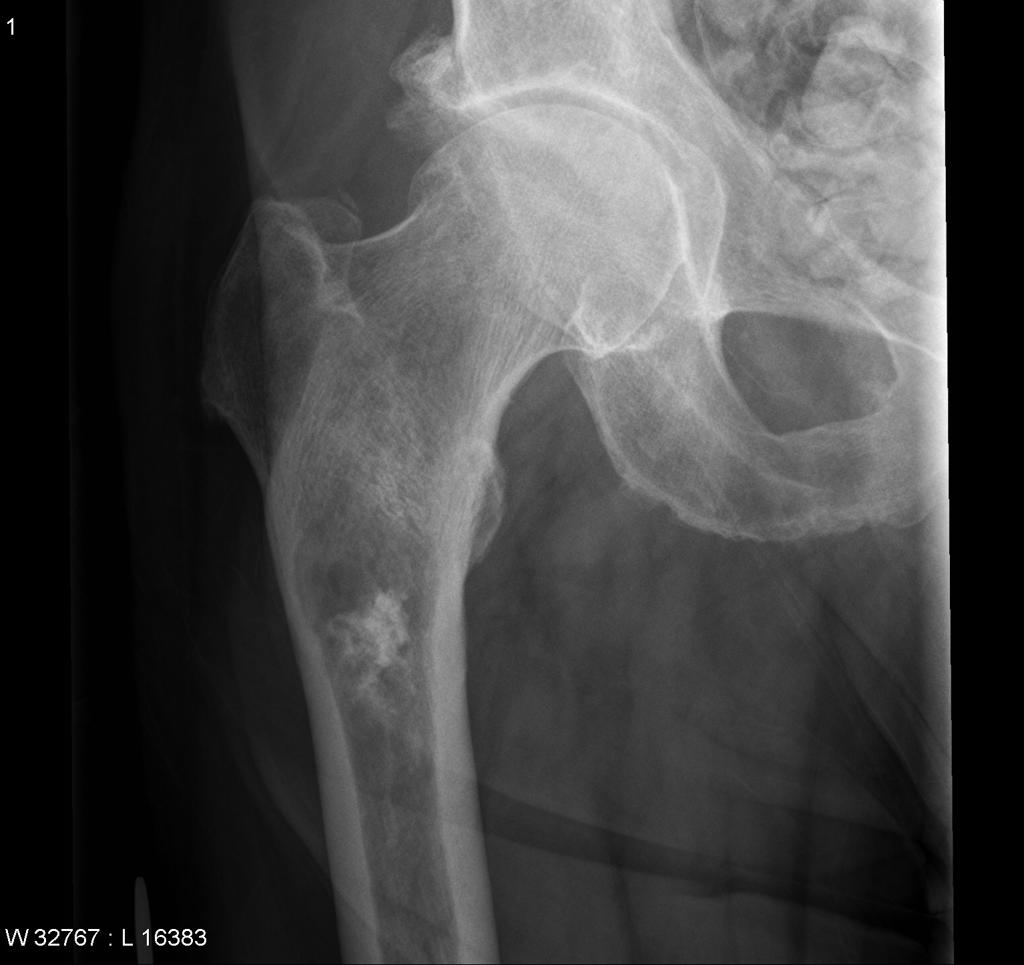Chondrosarcoma: Difference between revisions
| Line 27: | Line 27: | ||
== Associated Co-morbidities<br> == | == Associated Co-morbidities<br> == | ||
Soft tissue sarcomas, such as chondrosarcoma, are more commonly found in individuals who have: | |||
•von Recklinghausen's disease | |||
•Gardner's syndrome | |||
•Werner's syndrome | |||
•Tuberous sclerosis | |||
•Basal cell nevus syndrome | |||
•Li-Fraumeni syndrome | |||
•AIDS (Kaposi's sarcoma) | |||
•Radiation (following surgery), herbicides (phenoxyacetic acid), wood preservatives (chlorophenols), or vinyl chloride exposure | |||
== Medications == | == Medications == | ||
Revision as of 20:31, 10 April 2016
Original Editors - Students from Bellarmine University's Pathophysiology of Complex Patient Problems project.
Top Contributors - Dalton O'Brien, Corey Hardesty, Lucinda hampton, Nikhil Benhur Abburi, 127.0.0.1, Admin, Kim Jackson, Elaine Lonnemann, WikiSysop, Vidya Acharya and Rewan Elsayed Elkanafany
Definition/Description[edit | edit source]
Chondrosarcoma is a type of malignant bone tumor that most commonly effects the pelvis, sternum, scapula, or cartilage of long bones in the extremities. Typically, chondrosarcoma is a malignant cartilage tumor that is slow-growing and forms spontaneously or is due to malignant changes in a preexisting (secondary) bone tumor.
Prevalence[edit | edit source]
Chondrosarcoma is the most common malignant cartilage tumor and the third most common bone sarcoma (behind osteosarcoma and Ewing's sarcoma). This pathology is more common in adults over the age of 40, with peak occurrences in the fifth and seventh decades. It is possible to develop chondrosarcoma at younger age groups, which usually leads to higher malignancy and metastases rates.
Characteristics/Clinical Presentation[edit | edit source]
- Palpable mass
- Back, pelvis, or thigh pain
- Sciatica
- Bladder symptoms
- Unilateral edema
Associated Co-morbidities
[edit | edit source]
Soft tissue sarcomas, such as chondrosarcoma, are more commonly found in individuals who have: •von Recklinghausen's disease •Gardner's syndrome •Werner's syndrome •Tuberous sclerosis •Basal cell nevus syndrome •Li-Fraumeni syndrome •AIDS (Kaposi's sarcoma) •Radiation (following surgery), herbicides (phenoxyacetic acid), wood preservatives (chlorophenols), or vinyl chloride exposure
Medications[edit | edit source]
add text here
Diagnostic Tests/Lab Tests/Lab Values[edit | edit source]
Causes[edit | edit source]
As a whole, the epidemiology of soft tissue sarcomas is not well understood. Although there is no proven genetic disposition, some studies indicate exposure to certain herbicides, wood preservatives, and radiation lead to an increased risk of development. Currently, chrondrosarcomas are thought to form spontaneously or from preexisting bone tumors that have become malignant. Benign bone tumors (osteochondromas, enchondromas, chondromas) that become malignant are referred to as secondary chondrosarcomas and are still composed of cartilaginous tissue entirely.
Systemic Involvement[edit | edit source]
add text here
Medical Management (current best evidence)[edit | edit source]
add text here
Physical Therapy Management (current best evidence)[edit | edit source]
add text here
Alternative/Holistic Management (current best evidence)[edit | edit source]
add text here
Differential Diagnosis[edit | edit source]
add text here
Case Reports[edit | edit source]
add links to case studies here (case studies should be added on new pages using the case study template)
Resources
[edit | edit source]
add appropriate resources here
Recent Related Research (from Pubmed)[edit | edit source]
see tutorial on Adding PubMed Feed
Extension:RSS -- Error: Not a valid URL: Feed goes here!!|charset=UTF-8|short|max=10
References[edit | edit source]
see adding references tutorial.








